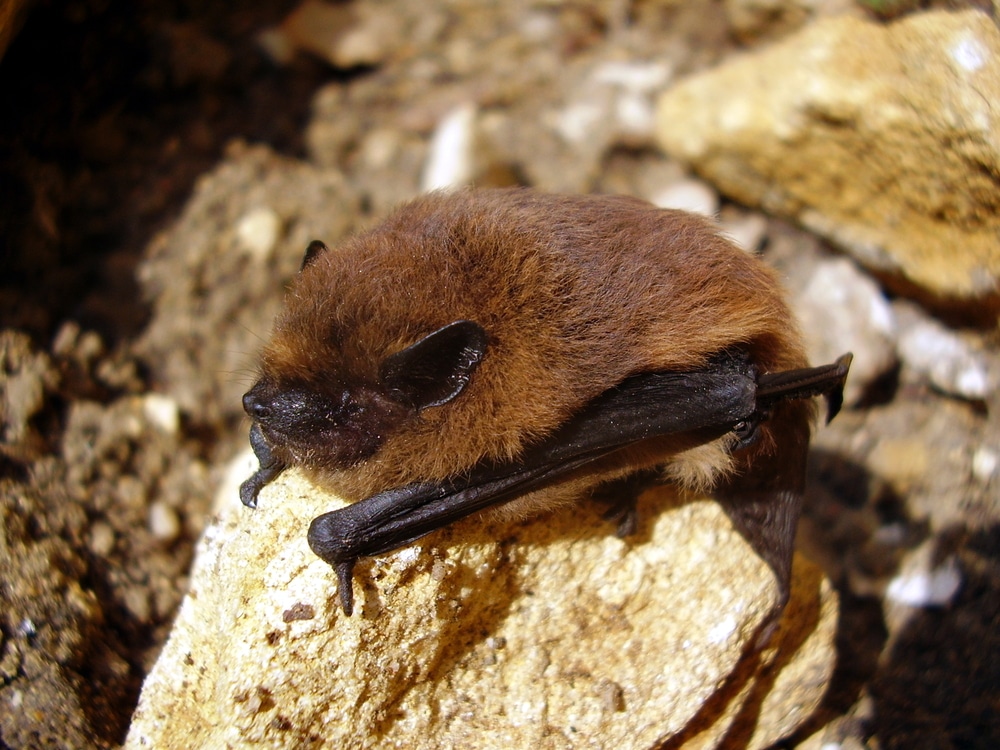Contact us today for a free quote.
Bat Building Surveys
Bat building surveys: What are bat surveys used for?
As bats are a protected species, it is illegal to kill, injure or disturb bats intentionally. For this reason, it is essential to determine whether bats are present to obtain planning permission for any type of development project.
If it is possible that there are bats close to a development site, a bat survey will be required as part of the planning application. Bat building surveys determine the presence of bats within a structure on or in close proximity to the site. Typically, the local planning authority will let you know whether or not a bat survey is required.
These bat surveys detect the presence or likely absence of bats within the area so that plans can for the development can proceed. If bat presence is found using bat building surveys, compensation and mitigation measures must be undertaken before any work on the proposed development can be permitted to proceed.
Some mitigation methods that Ecologists can use include the construction of a building or roof feature that has been specifically designed for bats or through the installation of bat boxes within or external to the building or tree that is home to the bats.

Activities that can pose potential harm to bats include renovating a building, cutting down branches from a mature tree, changing or removing bats’ foraging areas, repairing or replacing a roof or demolishing buildings.
The conservation of habitats for bats is a very complex matter, and there are lots of factors to be considered. Therefore, bat building surveys are crucial for ensuring that these habitats are not disturbed and reduce the potential impact on bats and their roosts.
Bat surveys are required to provide information on the species of bat, type of bat roost and the features used by the bats as they can also be used to track the species of the bats that are local to the area and locate any bats that may have migrated.
Bat building surveys: Bat activity
In the UK, bat activity is at its peak during the summer months. It is during this time of year that surveys should be carried out to determine the presence of roosting bats. If bat activity is found during a bat survey in the summer months, a bat hibernation survey could be required during the winter months to establish whether hibernating bats also use the area.
The many species of bat that are likely to be found in the UK are Common pipistrelle bats, Noctule bats, Soprano pipistrelle bats, Whiskered bats, Daubentons’ bats, Nathusius’ pipistrelle bats and Brandt’s bats.
Bats play an ecological role in nature conservation as bats promote biodiversity and support the health of their ecosystems. They do this by helping to pollinate and disperse the seeds of hundreds of species of plants that collects on their fur.
The feeding duration for bats is varied as it is affected by the weather conditions as bats tend to feed less on colder nights, with bats returning to their roosts earlier because there is less prey around.
Bat building surveys: Signs of bat activity
Unlike rat or mouse infestations, bats pose no threat to your property or place of construction. Their diet consists of insects, and they will not gnaw their way through cables, wires or insulation. They will not infest the location as bats typically only have one baby per year, and they do not build nests.
It can be difficult to identify whether bats are in the area; in many cases, people are completely unaware of their presence for an extended period of time. Bats hibernate during the winter and awaken in summer when they are most active at night, and then they usually return seasonally to the same roost so you should look out for signs during this time of year.
One indication that there may be bats within a building or structure is if you hear chattering. Bats tend to be very quiet as they communicate through the use of sonar; however, you may hear a chattering or high pitching scratching sound.
Another sign that bats may be near an area is if you find bat droppings. They are usually found on windows, walls, window sills, gable ends, under the ridge of the roof void where they are roosting, and around chimneys.
Watching for bat emergence is another great way to identify if bats are in the area. To do this, you should observe the building to see if any bats leave their roost at night to feed. They are also sometimes visible on the ridge beams inside the roof void.
Finding oily streaks can also be a sign of bats as bats leave behind an oily resin which can be a sign of a bat entry point. When bats are entering or exiting the small openings to and from their roosts, the oil that is produced by their skin can accumulate at the entry point and becomes an obvious indication that bats may be present.
Bat building surveys: Types of bat survey
There are two types of bat activity surveys. The first is a preliminary roost assessment which involves an Ecologist carrying out a site visit. They will undertake both an internal and external inspection of the building, looking for evidence of bats roosting, including insect feeding remains and bat droppings.
The second type is nocturnal bat emergence surveys which involve surveyors using bat detectors to record and analyse bat calls. These surveyors will operate either when bats are leaving their roosts to forage (dusk emergence surveys) or when the bats return to their roosts (dawn re-entry surveys).
A survey reporting bats must be properly planned and executed so that the survey works properly to ensure the safety of the bats.
Bat surveys are typically valid for one to two years due to the changing habits of bats, who may need to find new roosts with each season. There is a potential risk that out of date bat surveys can impact building plans and will then need to be addressed at a later date; therefore, both private developments and commercial developments should ensure that the bat surveys that have been conducted are in date.
Bat building surveys: Bats and the law that protects them
In 1981 the Wildlife and Countryside Act was passed, which enforced laws to protect all bat species in England, Scotland and Wales. These laws made bats a protected species, which means that it is an offence to:
· Capture, injure or kill bats
· Damage their breeding and resting places or take their young
· Obstruct access to their breeding site or nesting place
If you are found guilty of committing one of the listed offences against bats, you could receive an unlimited fine, or you could even be sent to prison for up to six months.
The Conservation of Habitats and Species Regulations 2017 protects species that are rare or threatened across Europe. In some cases, there is duplication, one of which is bats, meaning that they are protected both in domestic and European law.
This means that you need a European protected species license as well as a Natural England Bat License if your work will have an impact on them. This includes researching, surveying, possessing bats and other conservation activities.
As bats are protected by these laws, it means that some activities (such as construction) could potentially result in an illegal activity being committed. Therefore, precautions such as bat surveys must take place to ensure the safety of the bats and to prevent illegal acts from being committed unknowingly.
The reason that all bat species in the UK are protected is due to the fact that their numbers have declined dramatically. This decline is a result of a variety of factors, including loss of flight lines, loss of insects to feed on and loss of feeding habitats.
Alongside these laws, various groups have been founded that are dedicated to the conservation of bats. One of these groups is the Bat Conservation Trust which is dedicated to the protection of bats and their habitats.
Bat building surveys: How can Collington Winter assist?
Collington Winter Environmental are an experienced team of ecological consultants with extensive knowledge in undertaking bat and hibernating bat surveys on a variety of different development projects. Our Ecology Director, Olivia Collington, holds a Natural England Bat licence to be a bat worker.
Olivia is a Chartered Environmentalist with the Institute of Environmental Science, and she has worked with a variety of protected species throughout the UK, undertaking field surveys and writing scientific reports for submission at planning.
Our understanding of ecosystem services and our strive to create bigger better, more joined-up habitats allows us to work closely with Landscape Architects to provide a holistic approach to projects.
Please get in touch with our Ecology Director Olivia Collington (Olivia.collington@collingtonwinter.co.uk) for more information on protected species surveys (such as those in relation to Bats, Great Crested Newts, or Badgers) and mitigation. We also provide ecological appraisal and assessment services.
Our Director Jane Winter also provides landscape architecture services.
Contact Us
Registered Address
23 Bark Street East, 1st Floor, Bolton, BL1 2BQ
Cambridge Office
Future Business Centre, Cambridge Campus, Kings Hedges Road, Cambridge, CB4 2HY
Leicester Office
Rutland House, 23-25 Friar Lane, Leicester, LE1 5QQ
Bristol Office
Newminster House, 27-29 Baldwin Street, Bristol, BS1 1LT
Telephone
Head Office: 01204 939 608
Dumfries Office: 01387 378208
